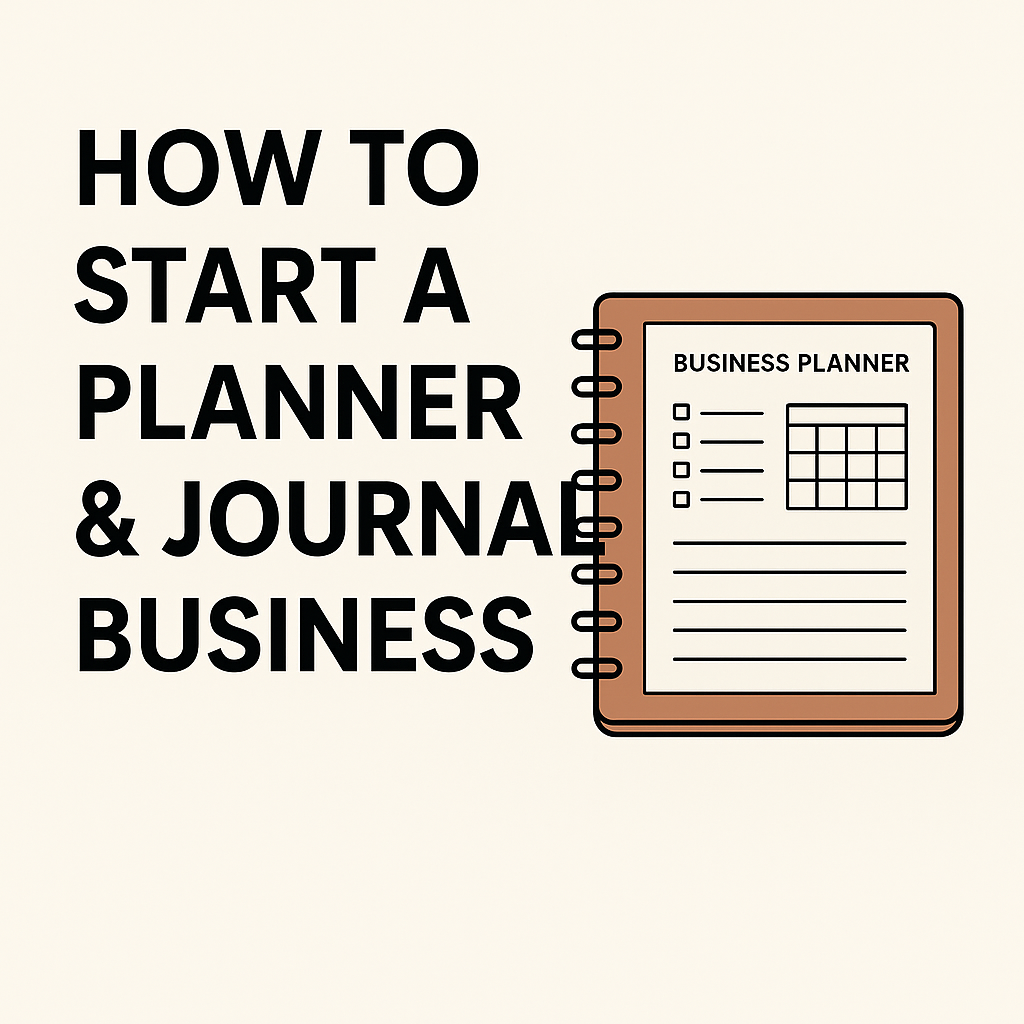Intro
Let’s write about Planners and Journals with this easy guide from AZIdea4U—the tools that help us stay sane in this chaotic world.
With remote work, side hustles and a heavy list, more people are looking for ways to bring their lives in order than ever. This is where planners come.
Today, we are breaking our own planner and journal business. If you want to sell physical planners, digital ones, or both, I have covered you.
Why Start a Planner Business?
First, why the planner? Simple – They are in demand.
People want the equipment to manage your time, set goals and be productive. Think about it – Fitness planners, wedding planners, academic planners, even digital for tablet lovers.
You are not just selling paper; You are selling clarity, structure and a little purity. And the best part? The market for planners and magazines is incredibly diverse.
Some people love daily planners with time-furious features, While other free-flowing bullets prefer magazines, where they can write and sketch, but they want.
Some love a simple minimal design, while others want colored and decorative.
No matter which niche you choose, there are buyers who really have to present you.
Step 1: Choose Your Niche
The first step is choosing your niche. This is important. Do not try to please everyone; Pay attention to solving a specific problem for a specific group of people.
Here are a few examples:
- Fitness enthusiasts that need to track workouts and food.
- Students are joining assignments and exams.
- Entrepreneurs are managing their goals and budgets.
- The bride and event planners organize a big day.
The more concentrated you are, the easier it is to attract the right audience.
But how do you find the right niche for yourself? Start thinking about your interests and expertise. If you are emotional about fitness, Creating a workout planner can be a great option. If you are a student, You already understand whether the features make a study planner useful.
Online research to see what type of planners are trending, check the best-sellers on ETSY and Amazon, and even ask people in their target audiences what they want in a planner.
Remember, a well -defined niche means that you are not competing with every planner Out there – you are offering some special valuable to a specific group of people.
Step 2: Design Your Planner
Once you lower your niche, the time comes to design your planner. This is where creativity comes from practicality.
For physical planners, start deciding on layouts that fits the best for your audience Need. Choose between:
- Daily for detailed time
- Weekly for an observation
- Monthly for long term plan
You can also add them to pairs flexibility.
After this, what kind of cover you think: Softcore planners are mild and flexible, making them easier to carry, while hardcover options provide durability and a premium feel.
Planner sizes are often standardized but vary between European and American styles. European planners use A, B and C series.
They share the same size, but vary in size, small numbers indicate large paper.
American sizes are more flexible, including popular options including letters, legal, Half a letter, junior legal, and pocket-shaped.
Your choice depends on practicality:
The pocket-shaped is ultra-portable and sometimes low as 50 pages, While half the letter is a versatile, Go-Two option.
Binding Options
When it comes to binding, you have many options:
- Staple binding: Ideal for simple and economical, thin planners.
- Spiral ring binding: allows the pages to smoothly twisted and flat lies.
- Stitched binding: classic and durable.
- Glue binding: classic and durable.
classic and durable.
Digital Planners
For digital planners, focus on:
- Usability
- Interactivity
- Cross-device compatibility
Canva and other design tools can be lifesavers here, or hire a freelance designer if this isn’t your strong suit.
Step 3: Production
Now, how do you bring your design to life? You have got some options.
For Physical Planners
- Print-on-demand: Services like printful let you avoid wholesale inventory but comes with more per-unit cost.
- Bulk production: A high upfront is required, but provides low cost per unit cost.
If you are going to the wholesale route, look for the manufacturers who specialize in planner printing. Alibaba is a great place to find suppliers worldwide, offering a series of adaptation options.
Order samples first to ensure quality before committing a large order.
For Digital Planners
This is simple – you will need to create downloadable files like PDF, Or use platforms such as perception or gudnotes that allow you to build your planner without coding experience.
Step 4: Build Your Brand
Your brand is the one that takes people to someone else. Start making:
- A name
- A logo
- A color scheme that fits your style
Set Up Your Online Presence
- Creating a website or open an Etsy store using Shopify.
- Use visual platforms such as Instagram and Pinterest to attract planner lovers.
Tip: Share the content that helps your audience. Post planning tips, productivity hack, or back and forth views your design process. It creates faith and keeps coming back to people.
Step 5: Market Your Product
Here is the place where it becomes real – marketing.
Getting your product in front of people is as important as to make it.
- Leverage social media ads
- Partner with affected
- Offer free like printable planner pages to develop your email list
Do not consider the power of Word-of-Mouth as less-Customers are your best promoters. In addition, consider joining planner-centric Facebook groups and Reddit communities. Being engaged in these places can help you understand and generate your audience early sales.
Step 6: Scale Your Business
Once you start selling, it is time to think about scaling. Consider expanding your product line:
- Various planner themes
- Luggage like stickers and bookmarks
- Membership with special templates
Sell to bookstores, boutique shops, or corporate clients who need branded planners for their employees.
You can also find wholesale opportunities:
Outro
So, it is a breakdown to start a planner and journal business. It is not only about making a product – it is about helping people to control their lives.
If you are ready to start, then focus on your niche, some designs that people will like, And build a brand that stands out. And remember, every big business started small.
If you are ready to start, then focus on your niche, some designs that people will like, And build a brand that stands out. And remember, every big business started small.


